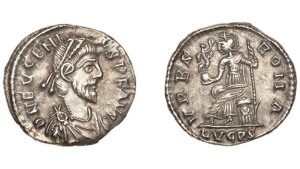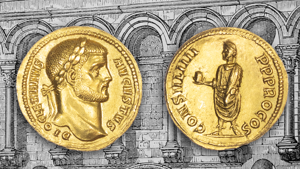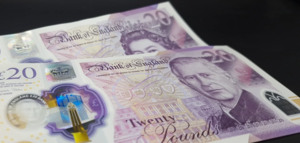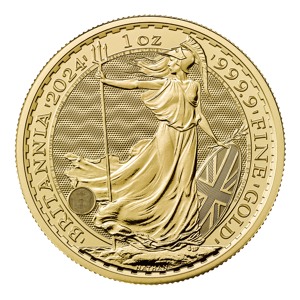Tavex uses cookies to ensure website functionality and improve your user experience. Collecting data from cookies helps us provide the best experience for you, keeps your account secure and allows us to personalise advert content. You can find out more in our cookie policy.
Please select what cookies you allow us to use
Cookies are small files of letters and digits downloaded and saved on your computer or another device (for instance, a mobile phone, a tablet) and saved in your browser while you visit a website. They can be used to track the pages you visit on the website, save the information you enter or remember your preferences such as language settings as long as you’re browsing the website.
| Cookie name | Cookie description | Cookie duration |
|---|---|---|
| tavex_cookie_consent | Stores cookie consent options selected | 60 weeks |
| tavex_customer | Tavex customer ID | 30 days |
| wp-wpml_current_language | Stores selected language | 1 day |
| AWSALB | AWS ALB sticky session cookie | 6 days |
| AWSALBCORS | AWS ALB sticky session cookie | 6 days |
| NO_CACHE | Used to disable page caching | 1 day |
| PHPSESSID | Identifier for PHP session | Session |
| latest_news | Helps to keep notifications relevant by storing the latest news shown | 29 days |
| latest_news_flash | Helps to keep notifications relevant by storing the latest news shown | 29 days |
| tavex_recently_viewed_products | List of recently viewed products | 1 day |
| tavex_compare_amount | Number of items in product comparison view | 1 day |
| Cookie name | Cookie description | Cookie duration |
|---|---|---|
| chart-widget-tab-*-*-* | Remembers last chart options (i.e currency, time period, etc) | 29 days |
| archive_layout | Stores selected product layout on category pages | 1 day |
| Cookie name | Cookie description | Cookie duration |
|---|---|---|
| cartstack.com-* | Used for tracking abandoned shopping carts | 1 year |
| _omappvp | Used by OptinMonster for determining new vs. returning visitors. Expires in 11 years | 11 years |
| _omappvs | Used by OptinMonster for determining when a new visitor becomes a returning visitor | Session |
| om* | Used by OptinMonster to track interactions with campaigns | Persistent |
| Cookie name | Cookie description | Cookie duration |
|---|---|---|
| _ga | Used to distinguish users | 2 years |
| _gid | Used to distinguish users | 24 hours |
| _ga_* | Used to persist session state | 2 years |
| _gac_* | Contains campaign related information | 90 days |
| _gat_gtag_* | Used to throttle request rate | 1 minute |
| _fbc | Facebook advertisement cookie | 2 years |
| _fbp | Facebook cookie for distinguishing unique users | 2 years |
What is Coin Clipping? An Introduction

Coin clipping might sound like a peculiar term from a history book, but it played a significant role in the economic landscapes of the past.
So, what exactly is coin clipping? Let’s dive into the fascinating world of ancient economies and discover how this practice affected societies and shaped monetary systems.
Coin Clipping Definition
Coin clipping refers to the act of trimming small amounts of precious metal from the edges of coins
This seemingly minor act had major consequences, impacting economies, legal systems, and everyday transactions.
Brief History of Coin Clipping
The history of coin clipping dates back to ancient times when coins were first minted. This practice became prevalent during periods when coins were made from valuable metals like gold and silver coins. Over time, the impact of coin clipping led to significant changes in how coins were produced and monitored.
Understanding Coin Clipping

Coin clipping is essentially a form of currency debasement. By shaving off small amounts of metal from coins, individuals could accumulate enough precious metal to melt down and sell, thus gaining wealth at the expense of the coin’s value.
Performing coin clipping was relatively simple. The clippers would use tools like shears or knives to trim the edges of coins.
The goal was to remove metal without making the coin noticeably smaller, thereby passing it off as its original value
The tools used for coin clipping evolved over time. Early methods involved simple cutting instruments, while later techniques included more sophisticated methods to avoid detection.
Historical Context

Coin clipping likely began soon after the invention of coinage. As coins became a standardised form of trade, the incentive to clip them emerged. Ancient civilisations like the Greeks and Romans had to contend with this issue.
During the Middle Ages, coin clipping became rampant
Monarchs and governments struggled to maintain the integrity of their currencies. The widespread nature of clipping led to severe economic disruptions and financial crisis.
The economic impact of coin clipping was profound. It led to inflation, as the value of money decreased, and mistrust in the currency system grew in the short term. This erosion of trust had far-reaching consequences for trade and economic stability.
Reasons Behind Coin Clipping

Economic Incentives
The primary driver of coin clipping was economic gain. By collecting small amounts of precious metals, clippers could amass wealth discreetly and with relatively low risk.
Social and Political Factors
Social and political turmoil often exacerbated coin clipping. In times of instability, the temptation to engage in such practices increased as a means of survival or profit.
Personal Gains and Motivations
Individual motivations also played a role. For some, coin clipping was a way to improve their financial situation quickly and without the need for extensive labor or resources.
Consequences of Coin Clipping

Economic Impact
The economic repercussions were severe. Clipping reduced the metal content of coins, leading to a decrease in their intrinsic value and causing inflation and financial (in)stability.
Legal Repercussions
Governments responded with harsh penalties. In many societies, coin clipping was considered a form of treason or theft, punishable by severe methods, including execution.
Social Consequences
Socially, coin clipping eroded trust in monetary systems. People became wary of accepting coins, and trade of goods and services suffered as a result.
Detection and Prevention

Detection methods included weighing coins and comparing them against standard weights. Visual inspections for irregular edges also helped identify clipped coins.
Governments introduced measures like re-minting coins with ridged edges, making it easier to spot tampering. Increased surveillance and stricter laws were also enacted.
Coinage evolved significantly in response to clipping. Innovations like milling and the use of less valuable metals for coins helped reduce the incentive to clip.
Some Coin Clipping Examples
Several notable cases of coin clipping have been recorded in history. For instance, during the reign of Henry III of England, coin clipping was so rampant that it necessitated a complete re-minting of the currency.
Some coin clippers became infamous, their actions leading to significant changes in currency laws and production methods. These individuals often faced severe punishment, serving as a deterrent to others.
Is Coin Clipping Still Relevant Today?

While traditional coin clipping is largely obsolete, the principles behind it remain relevant. Modern equivalents include counterfeiting and currency manipulation of modern coins.
Today, digital currency manipulation and fraud represent the contemporary forms of coin clipping. The same motivations and consequences apply, albeit in a different context.
Conclusion
Coin clipping, though an ancient practice, provides valuable insights into the economic activity and social dynamics of past societies. Its legacy continues to influence how we view currency integrity and financial security today.
By understanding the history and impact of coin clipping, we gain a deeper appreciation for the evolution of monetary systems and the continuous effort to maintain their integrity.
FAQs
What is the primary reason for coin clipping?
The primary reason for coin clipping was economic gain. Individuals could collect and sell the precious metals trimmed from coins, effectively increasing their wealth.
How was coin clipping detected in the past?
Coin clipping was detected using methods such as weighing coins, visually inspecting edges for irregularities, and comparing coins to standard weights and sizes.
Are there modern practices similar to coin clipping?
Yes, modern practices similar to coin clipping include digital currency manipulation, counterfeiting, and other forms of financial fraud.
What were the punishments for coin clipping?
Punishments for coin clipping were severe and could include imprisonment, fines, and even execution, as it was considered a serious crime against the state.
How did coin clipping affect ancient economies?
Coin clipping led to inflation, decreased trust in currency, and economic instability, significantly impacting trade and the overall economy.

















